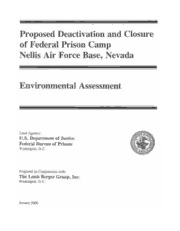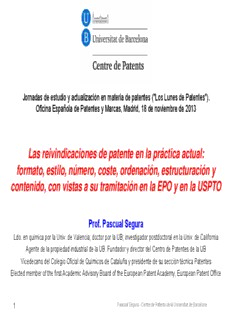
The Death and Rebirth of American Radicalism PDF
Preview The Death and Rebirth of American Radicalism
The Death and Rebirth American Radicalism This page intentionally left blank The Death and Rebirth of American Radicalism ~STANLEY ARONOWITZ Published in 1996 by Routledge 29 West 35th Street New York, NY 10001 Published in Great Britain by Routledge 11 New Fetter Lane London EC4P 4EE This edition published 2012 by Routledge: Routledge Routledge Taylor & Francis Group Taylor & Francis Group 711 Third Avenue 2 Park Square, Milton Park New York, NY 10017 Abingdon, Oxon OXI4 4RN Copyright © 1996 by Routledge All rights reserved, No part of this book may be reprinted or reproduced or utilized in any form or by any electronic, mechanical or other means, now known or hereafter invented, including photocopying and recording, or in any information storage or retrieval system, without permission in writing from the publisher. contents- Preface vii Introduction The Death of the Left I 1 When the New Left Was New 19 2 The New Left An Analysis 57 3 The Situation of the Left in the United States 91 4 Against the Liberal State ACT-UP and the Emergence of Postmodern Politics 125 5 Toward a Politics of Alternatives Part One 145 6 Toward a Politics of Alternatives Part Two 169 Notes 199 Index 211 This page intentionally left blank preface- ~ American radicalism has never enjoyed anything like success, at least in conventional political terms. Yet, from time to time—the first decade of the twentieth century, the Depression era and the 1960s—radicals played important roles in popular movements for economic and cultural reform and were able to occupy significant territories of the imagination. The Old Left socialists and communists were prone to explain away their failure to build a powerful mass radical movement, even as they took pride in their achievements in building resistance to government and corporate attacks against individual and group rights to organize and speak freely. Echoing an idea proposed early in this cen- tury by Werner Sombart, Aileen Kraditor has recently argued—forcefully I think—that radicals have been stymied by the vigor of U.S. capitalism, not repression, capitalist propaganda, business 's control over the means of informa- tion, or the internecine wars to which American radical organizations have become habituated.1 She concludes that workers—the subject/object of the radical imagination until the 1960s and beyond—knew about the radicals and their solutions but chose to act as if capitalism, for practical purposes, remained the context within which their aspirations would be contained. They joined unions, voted Democrat, Republican, and even Socialist and occasionally participated in militant strikes and social movements. But they decisively rejected the revolu-tionary solutions offered by the left. Some thirty-five years before Kraditor published her book, Dwight Macdonald, a prominent radical journalist, wrote a long essay on the failure of radicalism in the United States in Politics, then one of the most influential non- communist magazines of the independent left. He began The Root is Man with this quote from Leon Trotsky: "The second world war has begun. It attests incontrovertibly to the fact that society can no longer live on the basis of capi- talism. Thereby it subjects the proletariat to a new and perhaps decisive test." Trotsky proceeds to conjecture that the war would "provoke a proletarian revolution" not only in the defeated countries as it had following World War One, but in the Soviet Union as well. If, despite the carnage of the war and the demonstrated crisis of the system, the revolution does not occur, he ruefully admitted ("if however it is conceded the present war will not provoke a revolu- tion but the decline of the proletariat"), then there remains the possibility that democracy will deteriorate and a totalitarian regime may rise. Under these con- ditions, he concludes, "if the world proletariat should actually prove incapable of VIII ~ Preface fulfilling the mission placed upon it by the course of development, nothing else would remain except openly to recognize that the Socialist program based on the internal contradictions of capitalist society ended as a Utopia."2 The rest of the essay opposes a frankly Utopian, individualistic, and human- istic radicalism to Marxism's reliance on the contradictions of History. Macdonald's "new radicalism" is unabashedly critical, or at least frank about the chance that the working class may choose to affiliate with the revolution- ary aims of the left. His starting point is not History but the self, its subjectiv- ity. He is content to oppose the prevailing Order whether the "masses" want to or not. More than any other document of the post-war independent left, The Root Is Man forecasts the actuality of the most radical section of the New Left of the 1960s. While in the wake of the Cold War Macdonald felt compelled to "choose the West," his radicalism remained undiminished. My own critique of Marxism, The Crisis in Historical Materialism, dealt with the theoretical issues and some of the historical failures of the socialist and communist movements, but was not especially concerned with the specificity of the American radical legacy. I had long rejected explanations for the weakness of this legacy that pointed to McCarthyism and other instances of political repres- sion; nor was I particularly persuaded by the argument that the split in the Socialist Party after the Bolshevik Revolution mortally wounded the left. Finally, that the American Communist Party, by far the largest and most influential rad- ical organization of the 1930s, "never thought of thinking of itself at all" and remained until the breakup of the Soviet Union a loyal supplicant of Moscow (in Macdonald and Sidney Hook's terms "The American branch office of the GPU" [predecessor to the KGB]) did not impress me as a sufficient reason for the party's demise after 1956. In fact, I believe the Moscow tie helped the Communists more than it hurt them. I read Macdonald's long essay in 1982 and decided to address some of the questions he raised. Having been a political activist in the New Left of the 1960s and 1970s, but, like Aileen Kraditor, coming from the Old Left as well, I was concerned to find out what, if any, were the future possibilities for the left. In 1983 I published a two part answer to Macdonald in Socialist Review which, in retrospect, seems overly optimistic about the chances for radical revival as a result of the merger of the New American Movement, a New Left remnant of which I was a leader, and the Democratic Socialist Organizing Committee, a fairly large, but nonactivist collection of letterhead names and rank and file socialist sympathizers. In 1993,1 wrote a ten year retrospective of that experi- ence and described prospects for a Next Left for the same journal. This book resumes my own quest. I have drawn some new conclusions, but most important I am persuaded that Macdonald is right: to be a radical does not in the first place require a historical estimate that capitalism will collapse. What it requires is the elementary belief that even if the answers remain somewhat elusive, Preface ~ Ix the prevailing system of political, economic and cultural power, late or advanced global capitalism, is opposed to individual freedom and happiness. The Death and Rebirth of American Radicalism incorporates a small por- tion of the 1993 essay in chapter three. Chapter one, in somewhat different form, appeared in 60s Without Apology, edited by Sohnya Sayres, Anders Stephanson, Fredric Jameson and myself (University of Minnesota Press, 1984), and a portion of chapter four appeared in Social Postmodernism, edited by Steven Seidman and Linda Nicholson (Blackwell, 1995). The introduction and chapters two, five, and six appear here for the first time. As usual my intellectual and personal debts remain large. Ellen Willis read the entire manuscript and made important suggestions, especially in the last two chapters; Jonathan Cutler and Mike Roberts read substantial portions and gave criticism and feedback; Nona Willis-Aronowitz performed vital bibliographical research; David Staples and Mike Roberts were my research assistants for chap- ter two and David Trend and the Socialist Review collective edited the section of "The Situation of the American Left" incorporated into chapter three. Eric Zinner, my editor at Routledge, was instrumental in making some sense of a once unwieldy manuscript, but I take sole responsibility for the results.
The list of books you might like

Atomic Habits James Clear

Do Epic Shit

What Happened to You?

Mind Management, Not Time Management

84 recetas de la cocina francesa

The Structure of Argument

Thelypteris sancta (L.) Ching, New for Florida and the Continental United States

Cycas sancti-lasallei (Cycadaceae), a new species from the Philippines

Pedro Figari 2006 El Crimen De La Calle Chana

Afroasiatic

Star Trek and the Politics of Globalism

Greek Government Gazette: Part 1, 2009 no. 57

DTIC ADA639209: Proposed Deactivation and Closure of Federal Prison Camp, Nellis Air Force Base, Nevada. Environmental Assessment

Test of the hadronic interaction model EPOS with air shower data

Arrangements of Spheres and Projective Spaces

Greek Government Gazette: Part 2, 2006 no. 576

Virtuosa: Um estudo para mulheres de todas as idades

Calculating devices and actuarial work

Class or 29 by Orrie Lashin and Milo Hastings

Las reivindicaciones de patente en la práctica actual: formato, estilo

Ecología : secuencias didácticas para bachillerato tecnológico



